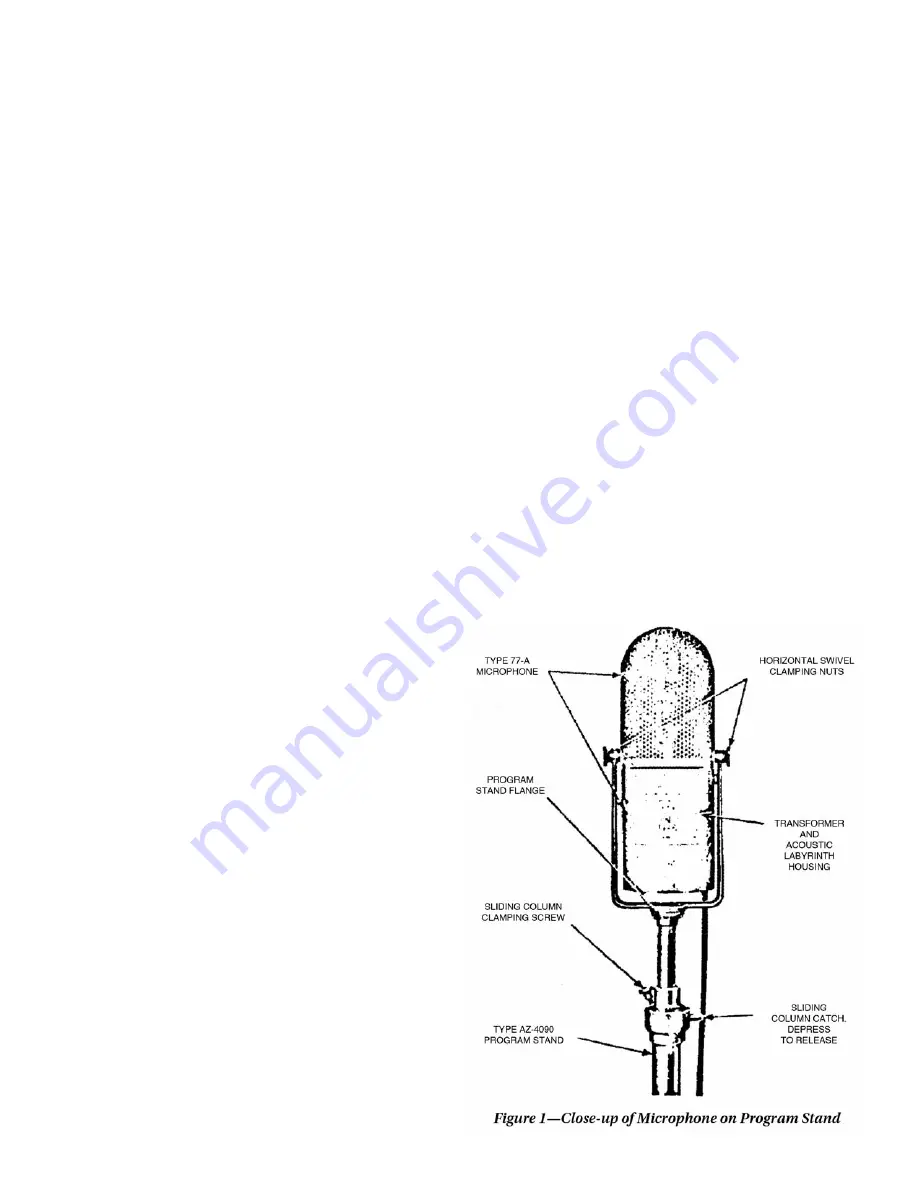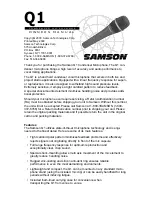
OPERATING INSTRUCTIONS
FOR
UNI-DIRECTIONAL MICROPHONE
TYPE 77-A
(MI-4040)
PART I — DESCRIPTION
1. Introduction.
—e RCA Type 77-A uni-directional micro-
phone is an entirely new type of pick-up device—a microphone
with a directional pick-up pattern wholly different from that of
any other microphone. While it resembles the velocity micro-
phone in appearance and construction, and is, in fact, evolved
from research and development work on the latter, the RCA
Type 77-A uni-directional microphone combines the principles
of velocity and pressure operation. For this reason, it possesses
in a surprising degree the best features of each and overcomes
the disadvantages inherent in both. In view of the fact that the
unit is designed to pick up sound arriving from one direction—
or, more accurately, from one side—while almost completely
rejecting sound from the other side, it is admirably adapted to
studio pick-up, public address and sound reenforcement appli-
cations.
Instead of a diaphragm (in the commonly accepted meaning
of the word), the uni-directional microphone contains a thin
metallic ribbon suspended between the poles of a permanent
magnet with its length perpendicular to, and its width in the
plane of, the magnetic lines of force. e ribbon is rigidly
clamped at the center, as well as at the top and the bottom. e
lower half is open front and back and operated as a regular ve-
locity microphone. In order to make the upper half of the ribbon
operate as a pressure microphone, it is, of course, necessary that
the rear of this section of the ribbon be enclosed. At the same
time it is not possible just to block this section off, as such a con-
trivance would result in a response increasing with the fre-
quency. Rather, it is necessary to present an acoustic
impedance to the back part of the ribbon. An infinitely long
tube would be the ideal impedance; but this, of course, is im-
possible. Instead, an ingenious labyrinth, which gives practi-
cally the same effect, is used. While this labyrinth has a finite
length, the desired damping of reflection is obtained by filing it
very loosely with sound-absorbing material. e result is that
the upper half of the ribbon becomes an efficient pressure-op-
erated microphone.
e vibration of each part of the ribbon is in exact accordance
with the sound vibrations and, occurring as it does within the
magnetic field, sets up corresponding alternating electric po-
tentials across the primary of its associated transformer. Since
the two microphones (
i.e.,
the velocity-operated section and the
pressure-operated section of the Type 77-A microphone) are a
part of the same ribbon, the voltages developed in the two sec-
tions are, of course, in series, and the output level is obtained
from the ends of the ribbon in essentially the same manner as
in the case of the velocity microphone.
2. Description.
—e uni-directional microphone shown in
Figure 1 consists of a microphone unit mounted in a horizontal
swivel on the top of a program stand. “Aiming” is accomplished
partially by means of this swivel and partially by rotating the
vertical column of the program stand. e transmitter is en-
closed within a circular, perforated metal casing, so designed
as to conform to the circular construction of the labyrinth,
which occupies the lower part of the unit.
e labyrinth consists of a series of circular sections, the inte-
rior of each section having a spiral partition, an opening at the
beginning or the end of which communicates with the begin-
ning or the end, respectively, of the section of the labyrinth that
immediately precedes or immediately follows it. e sections
occupying the upper part of the labyrinth are so designed as to
provide a cavity to accommodate the line coupling transformer,
which thus forms a part of the microphone unit.
Summary of Contents for 77-A
Page 7: ......


























